Russian window into the universe
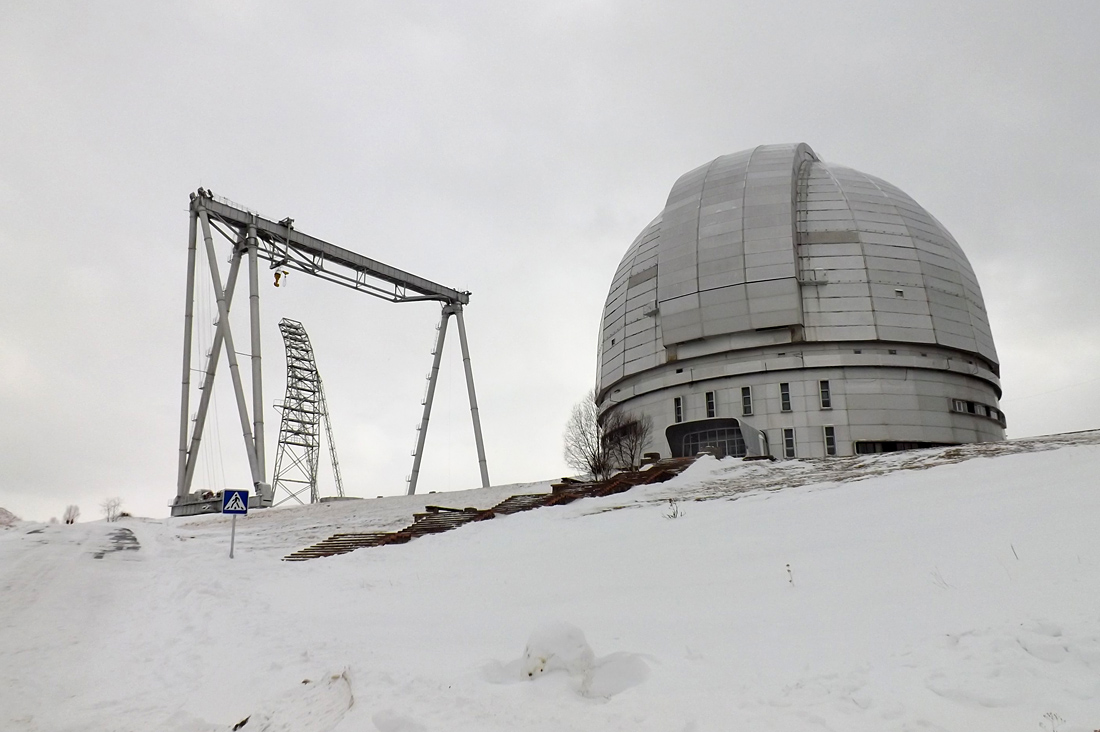
At an altitude of 2 kilometers in the Caucasus rises the world's largest dome of the largest optical telescope in Eurasia with a monolithic mirror. BTA - Alt-Azimuth Large Telescope - created in the 70s and today remains a serious world-class scientific instrument for studying the Universe.
The opportunity to see him and learn more about his work came to me thanks to friends from the company Intellect Tour . Last year, they carried people on an airplane to look at the eclipse , and during this winter vacation I first came to the mountains of Karachay-Cherkessia, and was able to get acquainted with the most important Russian astrophysical instruments: the BTA telescope, the RATAN-600 radio telescope, and look at the radio telescope RTF- 32.
Today I will tell about BTA.
Next to the telescope there is a hotel, and a minibus drove us there. True, the last hundred meters covered with snow and had to be overcome on foot.
')
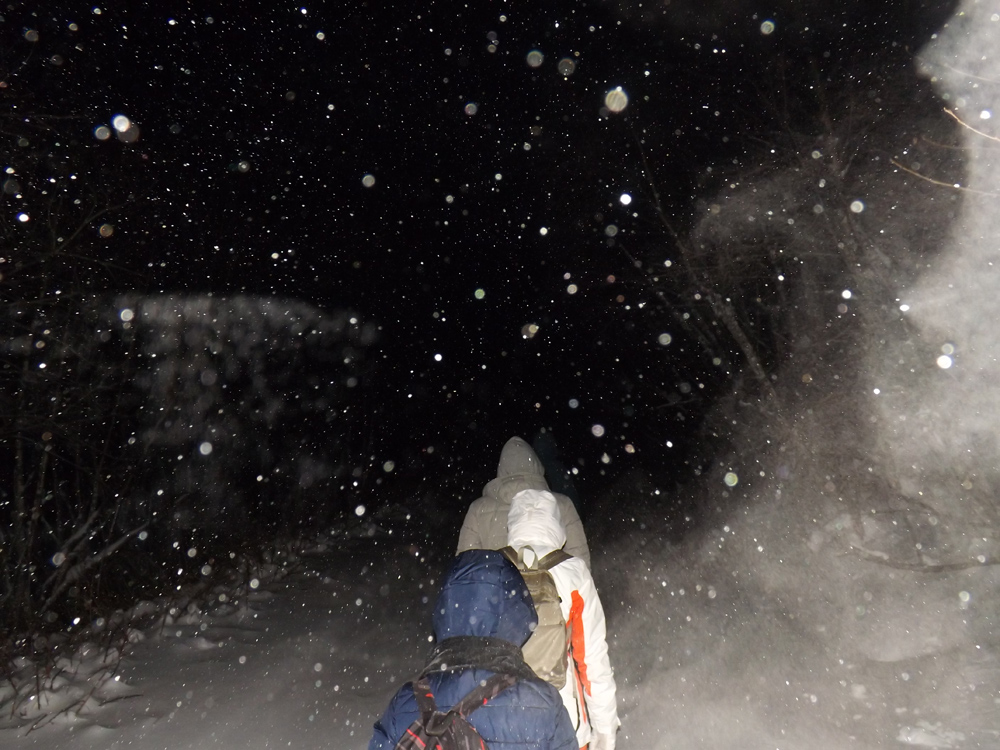
Night, blizzard, electric lights in the dark, and the invisible presence of space somewhere nearby, formed the atmosphere of the Strugatsky worlds. Starting the "Hotel at the dead climber," the next day continued "Monday begins on Saturday."
The telescope dome was erected in the 60s, in the then futuristic style, which perfectly conveys the image of the research institute to the FAQ.

Even on the approach to the telescope creates a feeling of something unreal or unearthly. Fantastic dome and crossbeam, porch entrance, similar to the entrance to the spaceport. I can not believe that you are in the same Caucasus, about which you have heard all conscious life in the news. Back in the Soviet Union, a whole nature reserve was created for scientists here: the Special Astrophysical Observatory of the Academy of Sciences , which is preserved to this day.

Behind the doors of the “spaceport” is also a monument of Soviet architecture. No changes, only machines with cola and snacks are knocked out of the composition (mineral water is local there, by the way).
On the ceiling - zodiac constellations.
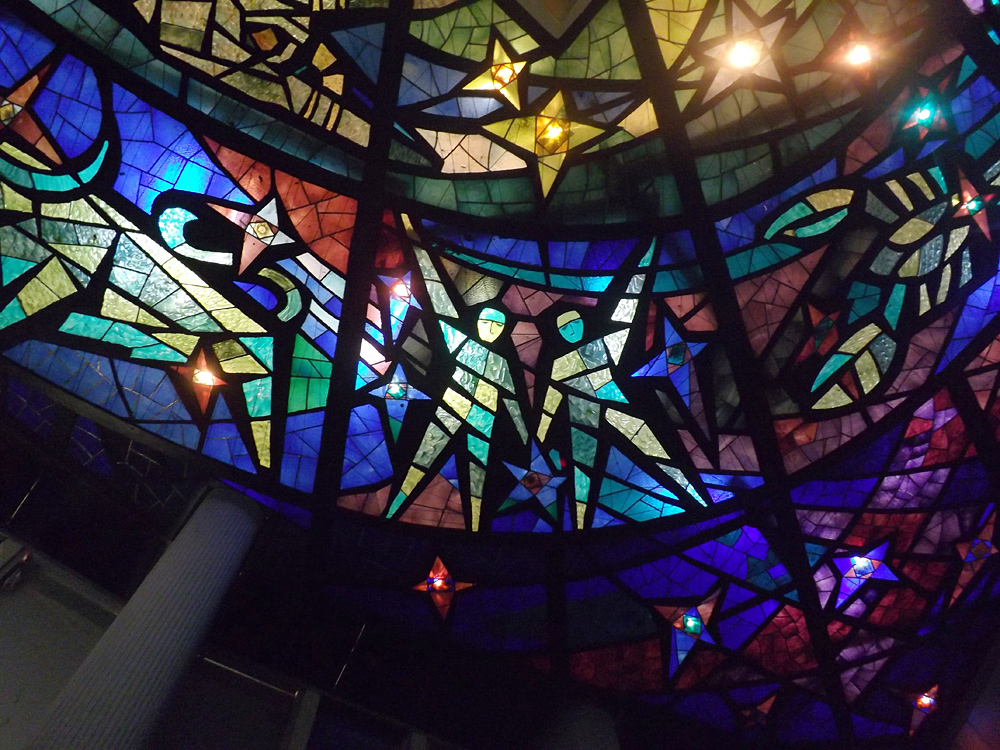
All rooms surround the main dome and there are no straight corridors. Slightly behind, and the tail of the tour is hidden from view. Immediately you feel like a Farada hero from "Wizards".

First, we are led to a small photo exhibition, from which one can learn how the telescope and observatory were built, and what it does. As it turned out, this is the only place where you can see the pictures from the telescope itself.
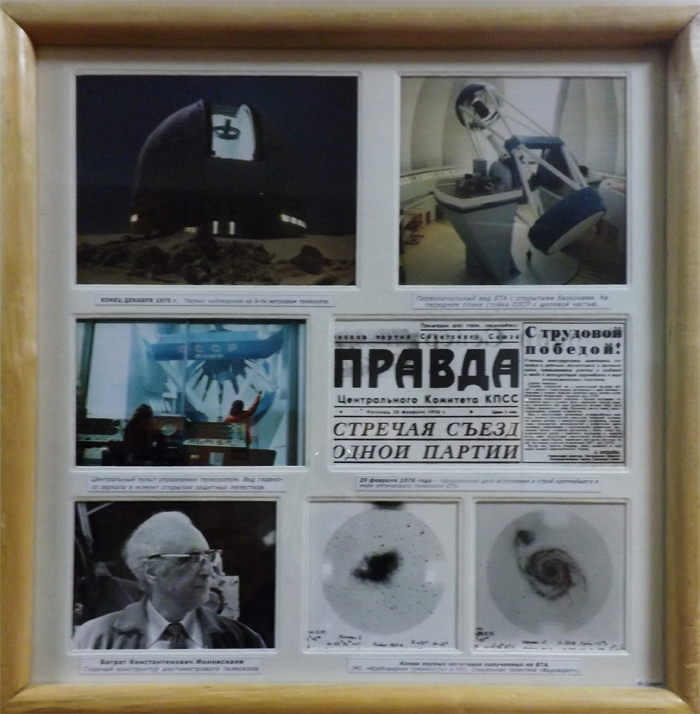
The rest of the cosmic beauty of the photo exhibition was from the Hubble telescope and photographers of local attractions. To the request to tell about some interesting recent discoveries of the telescope, I was sent to the site of SAO RAS .

Having completed the historical introduction, we are admitted under the dome. And then, of course, the full dump head. Probably many have seen BTA in the photo, but no camera will convey that enormous scale. The main mirror of the telescope is 6 meters, but the entire turning system is simply huge.
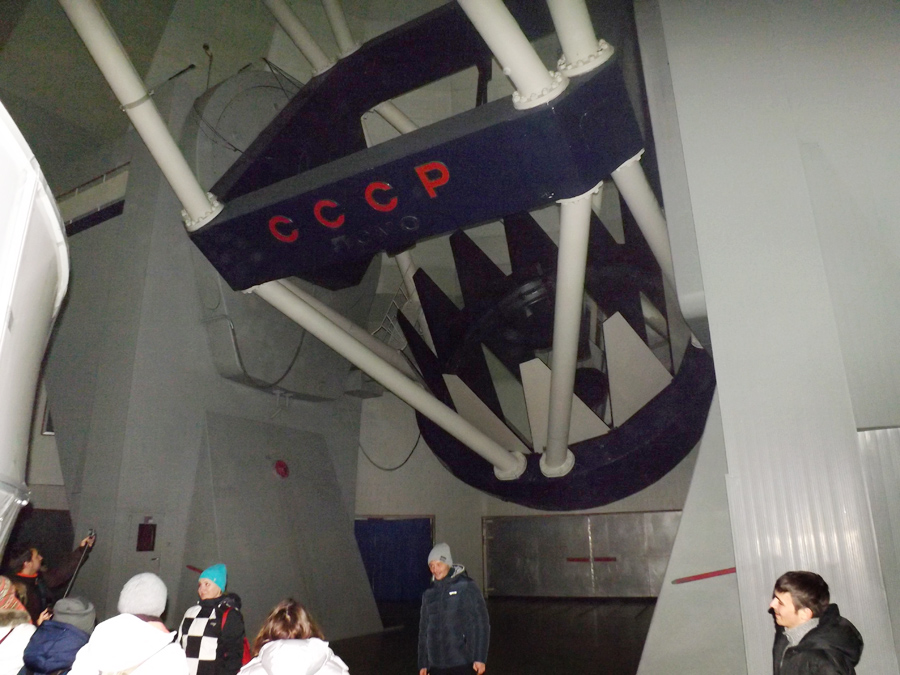

A cool photo essay. Learn about the user timag82 gives a much better idea of the dome and telescope, but even these photos can not bring those impressions that you experience in the hall.
A well-known fact about the telescope is the high sensitivity of the mirror to temperature extremes. Therefore, the temperature of the street is always maintained under the dome. So, this is not the most convenient place to work, especially in winter.
The astronomer's workplace used to be at the top of the telescope, but now there is already photo-receiving equipment, so scientists are forced to regularly reject numerous requests to look through a telescope.

The observer's cabin was called "the glass" by employees. "In the glass" went to work all night, changed the photographic plates and instruments. Do not think that there was warmer than under the dome / on the street ...

A walk under the structures of a giant telescope excursion was not limited. We were shown what technical devices ensure the accurate operation of this engineering miracle.

Rotation of the dome is provided on rails by this railway mechanism.
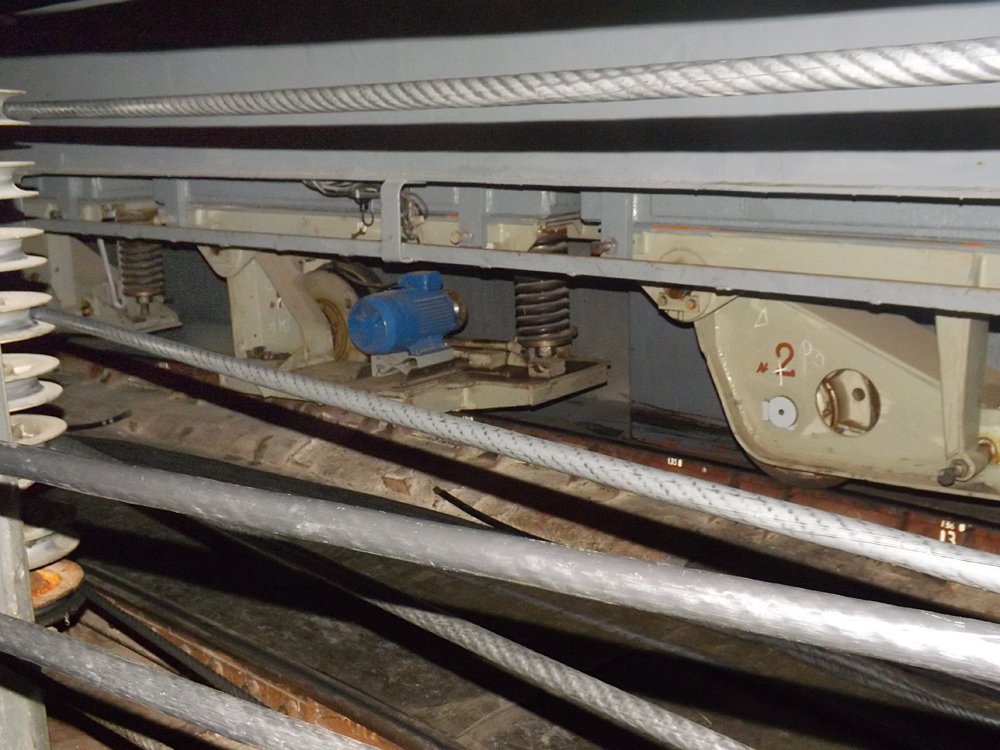
And the entire 142-ton colossus of the telescope rests on almost one point.

Although the main bulk take themselves hydrostatic pillows that support the telescope for the "waist."
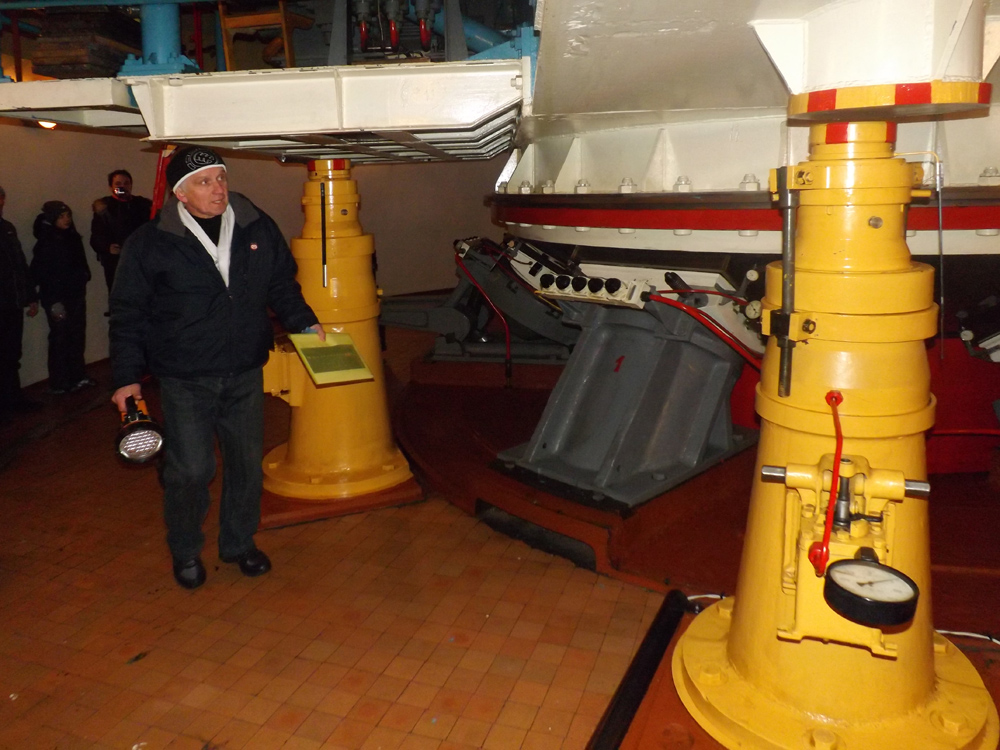
The entire telescope and its guidance system - the alt-azimuth mount - practically floats on the thinnest layer of oil. This system allows you to rotate the heavy structure of very small electric motors through a worm gear. Exact tracking of the telescope is provided by the very engine-kid (black in the photo). Yellow racks on the sides are jacks that allow you to lift the telescope if there is a need to repair the mount.

It is curious that the dome and the telescope have two different foundations. Therefore, when heavy wind gusts hit the dome or in the heat one side heats up in the sun and the other cools in the shade, the telescope practically does not feel these impacts, since its foundation is laid separately. The consequence of such a constructive solution was a seam on the floor separating parts of the building based on different foundations.

Hydrostatic pads are entwined with hydraulic pipes. This equipment, which ensures that the telescope always “floated” in oil, red under high pressure, yellow - under low. For the operation of the system, it is required to clean the oil and constantly maintain high pressure. This is done by units in another room, and here the engines of the pumps are more solid.
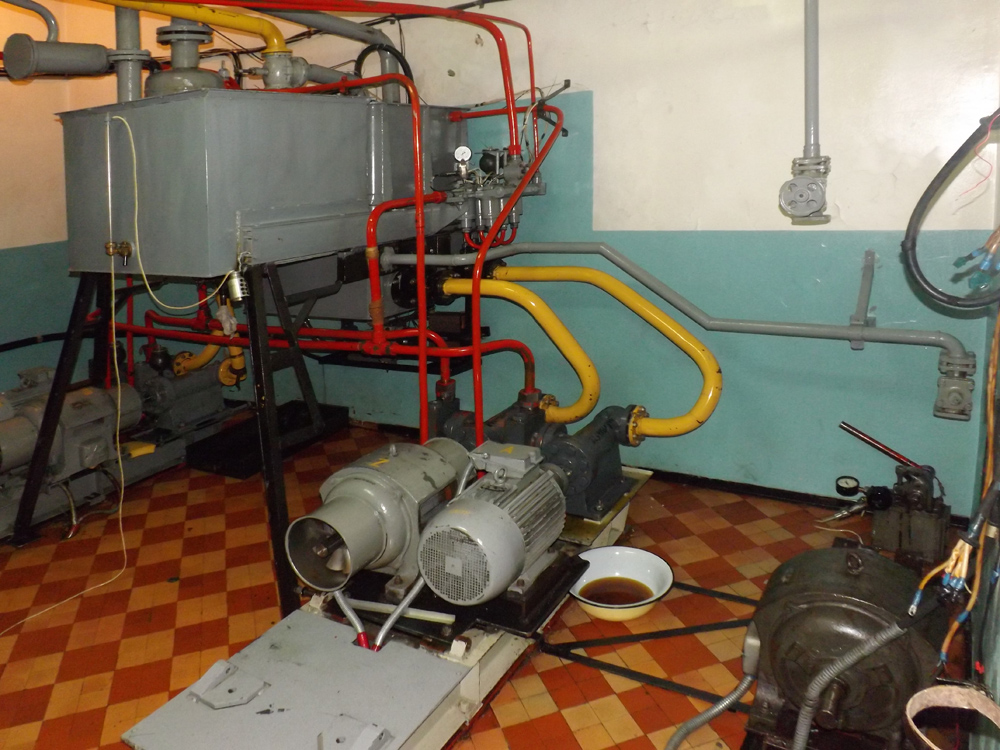
In general, when you travel along similar structures, and study, for example, the history of creating a telescope mirror, it comes to understand how great human curiosity is. Yes, of course, the main goal pursued by the leadership of the state is to do “more than them”, but still ... The desire to study the space around you, the desire to understand what is in the sky, what laws govern the Universe, led people to such a thing . Thousands of engineers, designers, opticians, hydraulic engineers, solved problems that would never have arisen before them, if Soviet science was not interested in space. And all the works that they put then, work like a clock today.
Unusual feeling just to be in such a place, not to mention how to work.
Forty years have passed since the discovery of BTA, but there are still a lot of questions in space, so astronomers will have enough work to do. The only pity is that they are not particularly in a hurry to talk about their work.
It would also be interesting to see where the technologies that were developed during the construction of BTA went. Surely, then they found applications in LOMO or elsewhere, but this topic is already for scientific research, inaccessible to me.
April 12-14 in CAO Open Days. You can book an excursion on BTA and RATAN here .
Here are some links for those who want to learn more about the current work of the observatory.
Source: https://habr.com/ru/post/392297/
All Articles